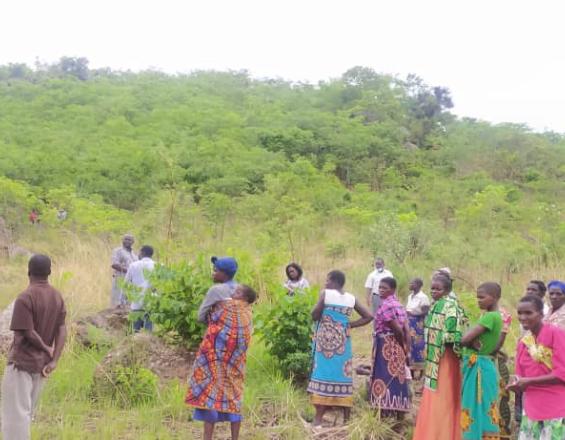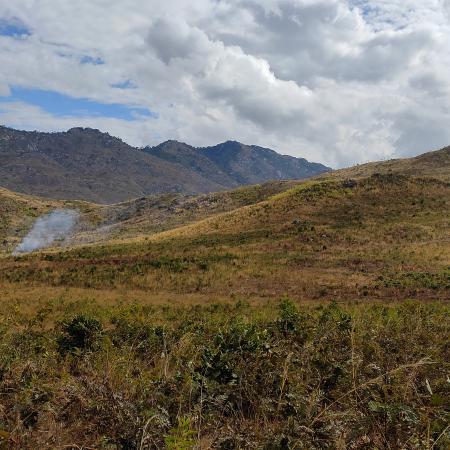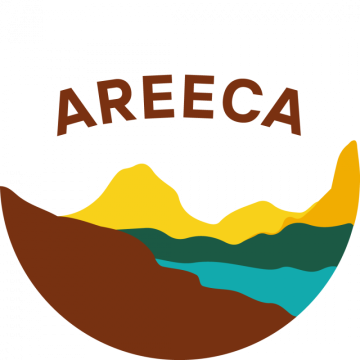
WHO SAID ONLY PROJECTS MATTER? GOMEZA COMMUNITY IN SELF-DRIVE TO CONSERVE THE PROTECTED AREAS

Ntcheu District is one of the most populated and face high deforestation rates in the country. Community empowerment to take active role in conserving protected forest reserves seem to bear fruits. Gomeza Community noted the catastrophic degradation of Mvai Forest Reserve and decided to embark on restoration programme by itself. It selected a portion of 15 ha and named it Gomeza forest. The community put in place governance and resource use measures. It has by-laws to restrict deforestation in Gomeza Forest. It has workscedule for volunteers to make patrols. Since 2014 the community has restored 15 ha of the 5000 ha Mvai Forest Reserve. Now Gomeza Forest is inhabited by wildlife species such as hyenas, rabbits, snakes and rats. Hyenas and rabbits were considered extinct in the area before 2014 but have become common animals in this restored forest.
Context
Challenges addressed
Like most countries in Sub-Saharan Africa, Malawi faces multidimensional challenges from economic to environmental. Deforestation rate is pegged at 2.8% and most protected forest reserves are highly encroached by surrounding communities. Charcoal making and wood harvesting dominate. Attempts to address these problems have focused on development of projects by either government or Non-governmental organisations and force these projects on the communities. Most solutions have focused on assumptions that communities are destructive to protected forest reserves. Less attention has been paid to communities that use self-drive to conserve protected forest reserves. It is against this background that Ntcheu District Council in collaboration with partners assessed the strides taken by some communities on the restoration of Mvai Protected Forest Reserve in Ntcheu District, Central Malawi. The focus was on the role Gomeza Community plays in restoring 15 ha of the reserve.
Location
Process
Summary of the process
The self-drive of the community became successful due to the partnerships with government and other institutions. For example, the community needed to achieve restoration of the degraded reserve but lacked technical knowledge. The partnership with Department of Forestry at Ntcheu District council led to provision of technical support and knowledge. Co-managemet helped the community and government to clarify their roles to prevent conflicts of interest. The partnership enabled the community to be nominated as candidate for apiculture. This will contribute to sustainable livelihoods among the Gomeza community members.
Building Blocks
Community Self-drive
The communities realised that they need to take actionin order achieve their dreams and support their ecosystem to retain its functions. They set up social structures and identified responsibilities in the form of positions and work plans. The community use volunteerism to carry out their duties nd drive the restoration efforts. They also formed their own by-laws to manage the Gomeza forest reserve, thereby adding not only social but also a regulatory framework set up to serve their needs.
Enabling factors
- Individual willingness
- Working by-laws
- Supportive local leadership (Traditional authority support)
- Volunteering
Lesson learned
Less financial inputs were needed to achieve great impacts
Community leading on conservation while government and other insitutions follow work well
Community-led initiatives more sustainable than a top-down approach
Partnerships
Although Gomeza Community used Self-drive to restore the forest reserve, the community attracted attention from government and non-governmental organisations. The partnerships led to provision of technical capacity building to the community on sivicultural aspects. Other insitutions also supported the community in their vision. This led to reduced resource need per institution to work with the community.
Enabling factors
- Accommodating
- Cooperation
- Joint planning
Lesson learned
Prevent the duplication of efforts by close cooperation and joint planning
Building trust and improved networking are key elements of starting partnerships
Impacts
- The whole area is covered with indigenous trees- resulting in reduced soil erosion. The reduced runoff have consequently reduced siltation at Mpira dam.
- The forest has become inhabited by wildlife species such as hyenas, rabbits, snakes and rats. Hyenas and rabbits were considered extinct in the area before 2014 but have become common animals in this restored forest. Bees have colonized natural tree hollows.
- Increased availability of wild fruits such as Azanza garkiana, Flocourtia indica, Uapaka kirkiana, Anona senegalensis in the forest. These fruits are collected by the communities for food and selling.
- The managed forest has become a destination for nature appreciation among the surrounding community members and those from distant places. The area is visited by communities and institution from other districts in Malawi to learn and appreciate the restoration of the protected forest reserve.
- The forest is a model for learning as it acts as field laboratory for Forest Subject in the primary school curriculum. The community has been nominated by AREECA project to venture into apiculture for income generation. Gomeza community comprises 420 households, with an estimated human population of 1,026. Of this population, 42% are male while 58% females. The youth represents 55%.
Beneficiaries
- Communities in the in the district and country (Gomeza community comprises 420 households. The youth represents 55%)
- Ecosystem services in the district
- Wildlife in the forest reserve
- People around the world benefit from carbon sequestration
Sustainable Development Goals
Story

Gomeza Forest area used to have thick forest and it was feared for its dangerous wild animals such as hyensa and leopards. Legend holds it that walking alone in the forest would be considered a dangerous adventure. That was way back around early 2000. But encroachment into the forest for chaorcoal making led to loss of forst and all wild animals. The neighbouring Mpira Dam could run dry during the hottest month of the year (September-October). Gomeza Community noted this catastrophic situation. The community mobilised itself and embarked on a restoration agenda. The Village Chief of Gomeza took action stating: '' I take lead to make sure we bring back the lost glory of Gomeza forest reserve which is part of the protected Mvai forested reserve.' Today the community is proud to have restored 15 ha. The feared hyenas are back into the reserve.






